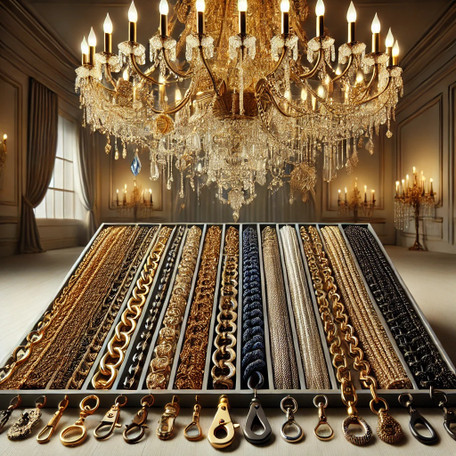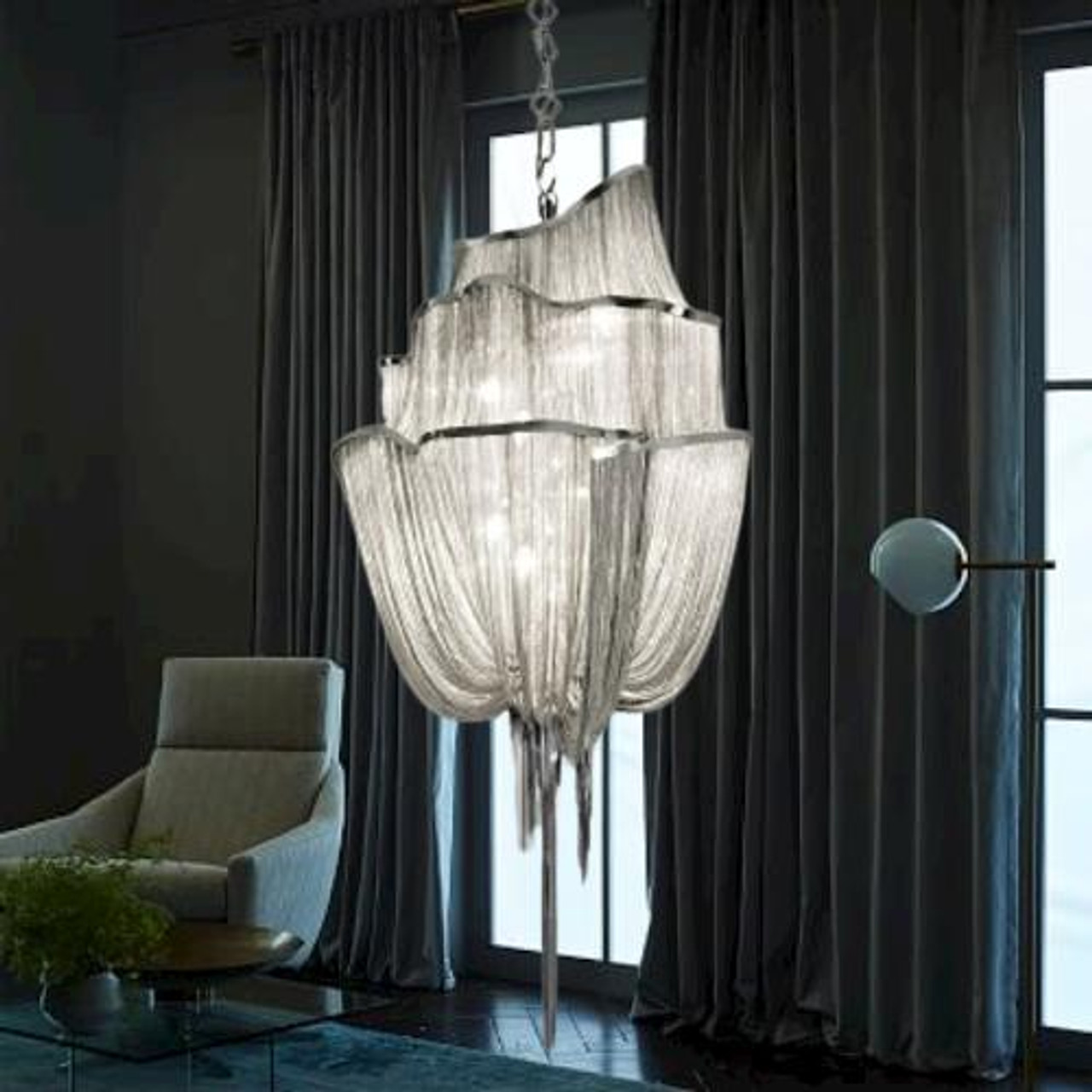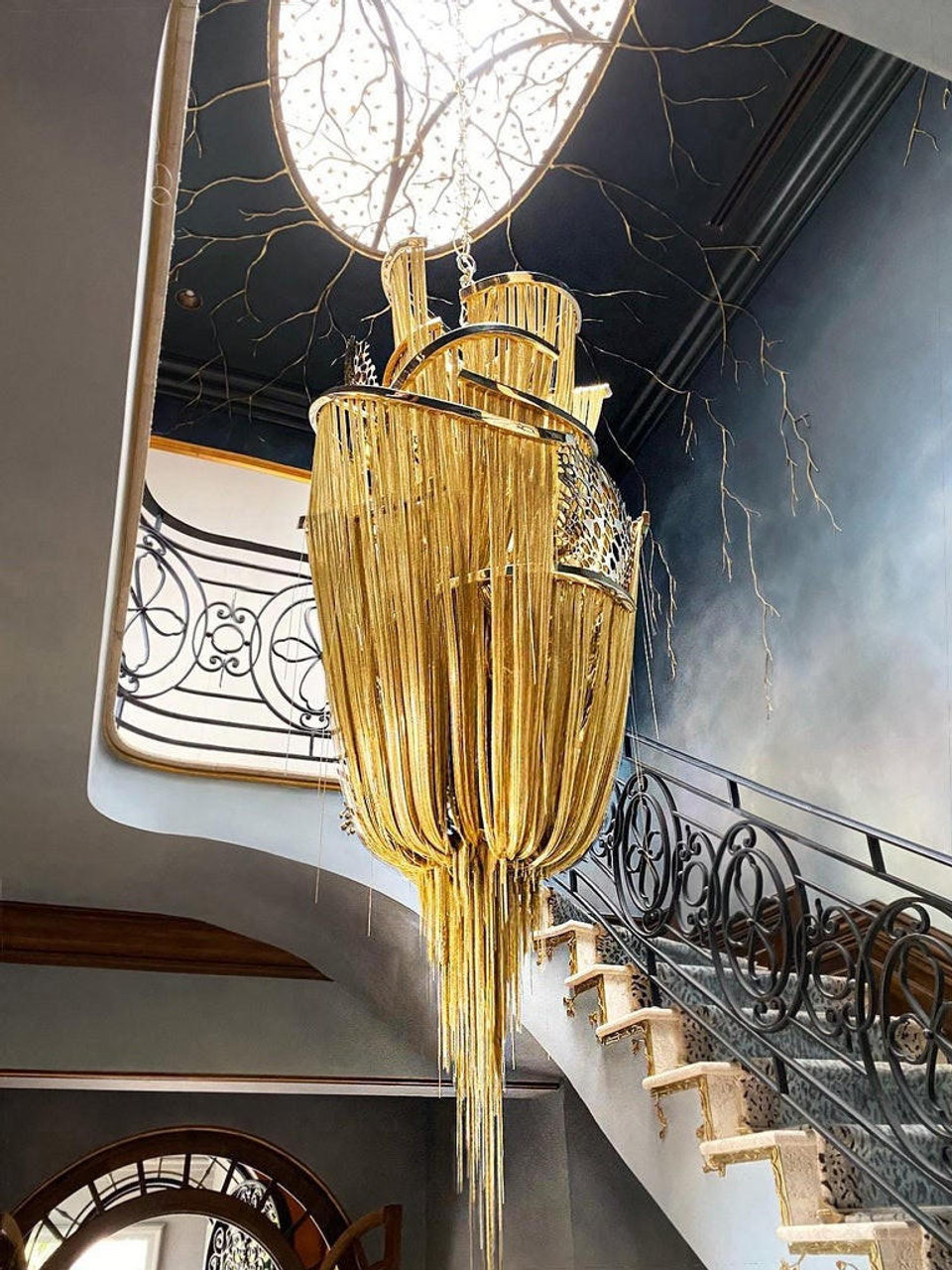Chandelier chains or Chandelier rods - Which to Use and When?
Jul 25, 2024
Is there any maximum length for chandelier chains?
There is no strict maximum length for chandelier chains, but practical and safety considerations dictate certain limits. The maximum length largely depends on the height of the ceiling, the weight of the chandelier, and the structural support available. Here are some factors to consider:
Practical Considerations
Ceiling Height:
- Proportional Length: For standard ceilings (8-9 feet), a chandelier chain length of up to 3 feet is usually appropriate. For higher ceilings, especially those 10 feet or more, longer chains may be needed to position the chandelier at the desired height.
- Room Use: In rooms with high ceilings, such as entryways or foyers, chandelier chains can be significantly longer. However, they should still allow for at least 7 feet of clearance from the floor to the bottom of the chandelier.
Weight and Support:
- Weight Capacity: Ensure the ceiling structure and the chandelier chain itself can support the weight of the chandelier. Longer chains can add stress to the mounting point, so the ceiling must be reinforced if necessary.
- Chain Strength: Chandelier chains must be rated to handle the chandelier's weight. Using a chain that is too long without adequate strength can lead to failure.
Safety Concerns
Swing and Movement:
Stability: Longer chandelier chains allow for more movement, which can be a safety hazard in case of strong air currents, vibrations, or accidental knocks. This movement can stress the ceiling mount and potentially lead to structural damage or the chandelier falling.
Anchor Points: For very long chandelier chains, additional anchor points or supports might be needed to prevent excessive swaying.
Installation Challenges:
Proper Installation: Installing a chandelier with a long chain requires precise work to ensure the weight is evenly distributed and securely attached to a strong ceiling joist or beam.
Accessibility: Very long chains can make it difficult to access the chandelier for cleaning, maintenance, or bulb replacement.
Aesthetic and Functional Balance
Design Proportion:
Visual Appeal: The chain length should be proportionate to the chandelier and the room’s dimensions. An excessively long chain can look awkward and out of place.
Lighting Efficiency: The height of the chandelier affects light distribution. Ensure the chandelier hangs at a height that provides effective lighting for the room.
Conclusion
While there's no absolute maximum length for a chandelier chain, it is essential to consider practical, safety, and aesthetic factors. Typically, chains up to 3-6 feet are common for high ceilings, but longer chains are possible with proper support and installation. Always ensure the ceiling can support the chandelier’s weight, and consider additional stabilization methods for very long chains to maintain safety and structural integrity.
What is the maximum recommend length for chadelier rods?
The maximum recommended length for chandelier rods typically depends on the height of the ceiling and the design of the chandelier. However, some general guidelines are:
- Standard Ceilings (8-9 feet): The bottom of the chandelier should hang about 30-34 inches above the table or surface below it.
- High Ceilings (10+ feet): For higher ceilings, add about 3 inches of chandelier rod length for each additional foot of ceiling height.
- Rooms without tables (like foyers): Ensure there is at least 7 feet of clearance from the floor to the bottom of the chandelier.
- Two-story foyers: The chandelier should be centered at a height that visually divides the space evenly, typically hanging down from the second floor's ceiling level.
Why isnt it advisable to go beyond the recomended length for a chandelier ceiling pole?
Exceeding the recommended length for a chandelier rods can lead to several potential issues and damages:
Structural and Safety Concerns
Increased Strain on Ceiling:
- Weight Distribution: A longer pole increases the leverage exerted on the ceiling mount. This added leverage can cause excessive strain on the ceiling, particularly if it's not reinforced adequately to handle the additional force.
- Ceiling Damage: Over time, the continuous strain can lead to cracks, weakening, or even collapsing of the ceiling. In severe cases, the entire chandelier assembly might detach from the ceiling, posing significant safety risks.
Movement and Instability:
- Wind or Air Currents: In areas with strong air currents or drafts, a longer pole allows the chandelier to swing more freely. This movement can cause the chandelier to hit the ceiling or walls, leading to further structural damage or the breaking of chandelier components.
- Knocking or Bumping: In homes with tall family members or active environments, the extended pole can be more easily knocked, causing abrupt movements that stress the mounting hardware and ceiling structure.
Physics and Mechanics
Leverage and Torque:
- Torque Increase: The longer the pole, the greater the torque (rotational force) applied at the ceiling mount when the chandelier is moved. Torque is calculated as the force applied times the distance from the pivot point (in this case, the ceiling mount). A longer distance amplifies the force.
- Lever Arm Effect: The pole acts as a lever arm, and according to the principles of physics, the longer the lever arm, the less force is needed to create a significant rotational effect. This makes it easier to accidentally apply enough force to damage the ceiling.
Structural Fatigue:
- Constant Stress: Repeated or continuous stress on the ceiling mount, even if it's minor, can lead to material fatigue over time. This weakening can result in the eventual failure of the ceiling structure, causing the chandelier to fall.
- Vibration and Oscillation: A longer pole can amplify vibrations from nearby activities (e.g., footsteps, doors closing), leading to oscillations that further stress the ceiling mount and surrounding area.
Practical Implications
Aesthetic and Practical Balance:
- Proportional Design: Chandeliers are often designed with a certain proportion in mind. Extending the pole beyond recommended lengths can disrupt this balance, making the fixture look awkward or out of place.
- Installation Complexity: Longer poles require more precise installation to ensure stability, which can complicate the process and increase the risk of improper mounting.
Conclusion
For safety, structural integrity, and aesthetic reasons, it's crucial to adhere to recommended lengths for chandelier rods. Ensuring proper support, reducing leverage-induced stress, and preventing excessive movement are key factors in maintaining a safe and attractive chandelier installation.



